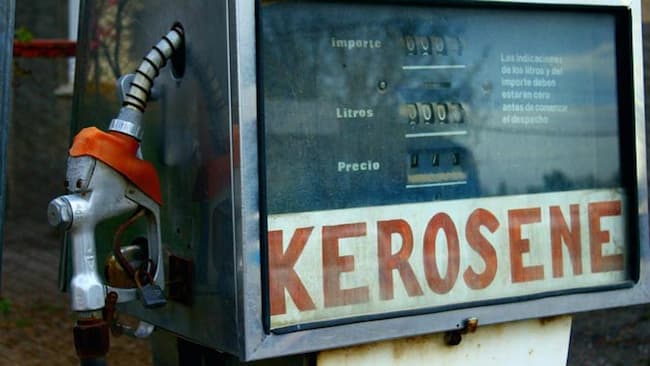Poor Nigerians may no longer be able to afford household kerosene due to the commodity’s price increase of 118% over the previous year.
The average retail price per litre of the product increased by 118% to N947 from N434 in September 2021, according to the Nigerian Bureau of Statistics’ (NBS) National Household Kerosene report for September.
The average retail price for a litre of HHK that customers paid in September 2022 was N947, up 17% from the N809 price reported in August 2022, according to the research.
According to a breakdown of the data, Enugu had the highest average price per litre in September 2022, with N1,272, followed by Ebonyi and Cross River, both with N1,264. In contrast, Rivers had the lowest price at N686, followed by Bayelsa at N715 and Nasarawa at N735.
Additionally, research by zone revealed that the North-West had the lowest average retail price per litre of the product at N869, while the South-East had the highest at N1,128.
Consumers spent N3,236 on average for a gallon of goods at retail in September 2022, an increase of 10% from N2,948 in August 2022. On an annual basis, it climbed from N1,541 in September 2021 by 11%.
According to a research on state profile analysis, Abuja had the highest average retail price per gallon of cooking kerosene at N4,200, followed by Abia and Enugu at N4,078 and N4,052, respectively. The lowest price was reported in Borno, though, at N2,500. Zamfara and Delta were next, with N2,555 and N2,577, respectively.
Analysis by zone showed that the South-East recorded the highest average retail price per gallon of the product with N3,607, followed by the South-West with N3,468, while the North-East recorded the lowest with N2,804.
The price of cooking kerosene per gallon increased to N790 in July from N761.69 in June, a 3.68 percent rise. The Nigeria National Petroleum Firm Limited (NNPC), the country’s state oil company, has stopped importing the good, forcing small retailers to keep raising their prices.
More than 70% of Nigeria’s 200 million people, according to Group Chief Executive Officer of NNPC Ltd. Mele Kyari, lack access to clean cooking fuels. The cost of cooking gas has also increased dramatically.
Oladapo Olatunbosun, national president of the Nigerian Association of Liquefied Petroleum Gas Marketers, disclosed that gas consumption has sharply decreased to 800,000 metric tonnes per year from a record high of 1, 250 million MT per year reached around four months ago.
According to him, given Nigeria’s huge population, the country should consume at least six million MT per annum.
“800, 000MT per annum is the current consumption rate in Nigeria. A few months ago we were doing 1,250 million MT per annum.
“Ordinarily, given our population in this country, we should consume about six million MT per annum just like other African countries like Morocco , Egypt, Algeria, Kenya , South Africa and other countries. But these countries currently consume more LPG than Nigeria despite our huge population,”














